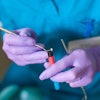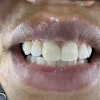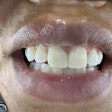A new study compares fiber-reinforced composite and titanium implants as part of a special issue of the Journal of Oral Implantology (March 2011, Vol. 37, pp. 133-140) focusing on anticipated advances in oral surgery.
Researchers analyzed how the two materials affect stress and strain on the implant and the bone tissue surrounding it. They also compared interfacial stresses between the materials under three directions of load.
Distribution of stress and strain to the jawbone is significantly changed after reconstruction with oral implants. How an implant using fiber-reinforced composite reacts has not yet been well tested. This biomechanical connection between implant and bone can be different for each patient and is hard to measure, according to the researchers.
Therefore, the researchers used a 3D finite element model constructed from a mandibular bone and an implant to test these materials. The model was subjected to stress loads of 50 newtons (N) in vertical and horizontal directions.
Although variances were observed for both the fiber-reinforced composite and the titanium materials with these tests, the composite performed well.
The strain distribution demonstrated clear differences between the two materials.
The results showed that the vertical load stress range of the fiber-reinforced composite implant was close to the stress level for optimal bone growth. The composite implant also proved to have a more even distribution of stress at the bone surrounding the implant than the titanium, according to the researchers.



















